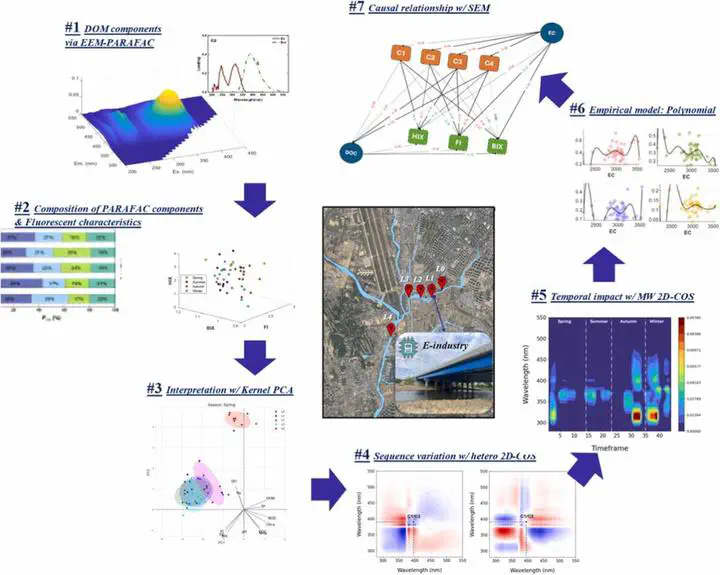Revealing spatial-temporal impact of industrial effluent towards DOM in Riverine employing PARAFAC and MW-2D COS
 Graphical Abstract
Graphical AbstractAbstract
Industrial activities often disrupt the natural equilibrium of water bodies, with discharged wastewater introducing dissolved organic matter (DOM) and pollutants. This study investigated the water quality along a riverine system subjected to heavy industrial influence by collecting samples from distinct points at before, during, and after industrial discharge across four seasons. By employing EEM-PARAFAC, four fluorescent components were identified at the discharge point including C1 (microbial/ terrestrial humic-like), C2 (anthropogenic humic-like materials), C3 (microbial humic-like), and C4 (wastewater/nutrient enrichment tracer). Specifically, C2 and C4 which contained wastewater and anthropogenic-like material are not found at the pre-pollutant point. Additionally, fluorescence characteristics parameters such as FI, HIX, and BIX are analyzed. Kernel Principal Component Analysis was employed to elucidate the non-linear relationships inherent in the data that able to covered up to 97 % of the data variance, offering nuanced insights into complex behavior of water characteristics across seasonal variations. Two-dimensional correlation spectroscopy (2D-COS) was further employed to evaluate the sequence variation of DOM components and further identify the temporal effect across season with moving window 2D-COS. The sequence order of the DOM fractions was identified as C2→C4→C1→C3 by following the Noda’s rule. In order to understand the interactions between the water characteristics and the DOM components, an empirical polynomial regression model is developed with an average MAPE of 2.2 %. The interaction between DOM-related parameters was identified using structural equation modeling. These findings underscore the dynamic nature of DOM composition under industrial influences considering the spatial-temporal impact.